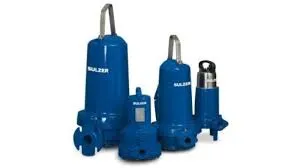Portuguese
- Afrikaans
- Albanian
- Amharic
- Arabic
- Armenian
- Azerbaijani
- Basque
- Belarusian
- Bengali
- Bosnian
- Bulgarian
- Catalan
- Cebuano
- Corsican
- Croatian
- Czech
- Danish
- Dutch
- English
- Esperanto
- Estonian
- Finnish
- French
- Frisian
- Galician
- Georgian
- German
- Greek
- Gujarati
- Haitian Creole
- hausa
- hawaiian
- Hebrew
- Hindi
- Miao
- Hungarian
- Icelandic
- igbo
- Indonesian
- irish
- Italian
- Japanese
- Javanese
- Kannada
- kazakh
- Khmer
- Rwandese
- Korean
- Kurdish
- Kyrgyz
- Lao
- Latin
- Latvian
- Lithuanian
- Luxembourgish
- Macedonian
- Malgashi
- Malay
- Malayalam
- Maltese
- Maori
- Marathi
- Mongolian
- Myanmar
- Nepali
- Norwegian
- Norwegian
- Occitan
- Pashto
- Persian
- Polish
- Portuguese
- Punjabi
- Romanian
- Russian
- Samoan
- Scottish Gaelic
- Serbian
- Sesotho
- Shona
- Sindhi
- Sinhala
- Slovak
- Slovenian
- Somali
- Spanish
- Sundanese
- Swahili
- Swedish
- Tagalog
- Tajik
- Tamil
- Tatar
- Telugu
- Thai
- Turkish
- Turkmen
- Ukrainian
- Urdu
- Uighur
- Uzbek
- Vietnamese
- Welsh
- Bantu
- Yiddish
- Yoruba
- Zulu
Telephone: +86 13120555503
Email: frank@cypump.com
Out . 16, 2024 11:24 Back to list
Fire pump featuring dual suction capability for improved performance and reliability in emergencies
Fire Pumps with Dual Suction Capability for Enhanced Safety and Efficiency
In the realm of fire safety and emergency response, the equipment utilized can often mean the difference between catastrophic loss and effective intervention. Among these essential tools, fire pumps play a pivotal role in mobilizing water supplies to combat flames. One of the most advanced innovations in fire pump technology is the dual suction capability, which not only enhances operational efficiency but also improves the safety of firefighting efforts.
Understanding Fire Pumps
Fire pumps are mechanical devices designed to move water from a source—be it a hydrant, a reservoir, or a water tank—into fire hoses that firefighters use to suppress flames. The performance of fire pumps is crucial because prompt and adequate water delivery is fundamental during a fire emergency. Conventional fire pumps usually rely on single suction sources. While effective, this design can lead to limitations in flow rate and pressure, especially in scenarios where water supply is constrained.
What is Dual Suction Capability?
A fire pump with dual suction capability features two separate inlet connections. This design allows the pump to draw water from two sources simultaneously or switch between them seamlessly. The dual suction system typically consists of either two separate suction hoses or a manifold that can connect to two water supply lines.
The advantages of this design are manifold. Primarily, it significantly increases the volume of water that can be pumped, which is crucial during intense firefighting scenarios. Additionally, in situations where one water source might be compromised—due to contamination, depletion, or damage—the ability to switch to a backup source ensures uninterrupted water flow. This adaptability can be lifesaving in critical moments.
Enhancing Firefighting Efficiency
'fire pump with dual suction capability for enhanced ...'

In many urban settings, where firefighting is complicated by high-rise buildings and complex infrastructure, dual suction capability can substantially enhance operational efficiency. During a fire in a tall building, for instance, firefighters often face logistical challenges in sourcing sufficient water from hydrants. By utilizing a fire pump with dual suction capabilities, crews can pull from multiple hydrants or water tanks at once, ensuring that they have the necessary resources to tackle the situation head-on.
Moreover, this system minimizes downtime caused by pump priming or drawing issues, as the pump's ability to draw water from two sources can maintain pressure and flow, even if one source is temporarily lost. This can dramatically reduce the risk of fire escalation, allowing firefighters to manage blazes more effectively.
Safety Considerations
Safety is paramount in firefighting operations. Utilizing a dual suction fire pump not only improves efficiency but also enhances the safety of personnel on the ground. With reliable access to water, firefighters have a better chance of controlling flames and minimizing the risks associated with fire spread. Additionally, by diversifying water sources, the pump helps prevent potential failure due to equipment malfunction, ensuring that firefighting teams can focus on their primary mission without the constant worry of water inadequacy.
Conclusion
The integration of dual suction capability in fire pumps marks a significant advancement in firefighting technology. As urbanization continues and fires become increasingly complex to manage, the need for more effective and reliable firefighting equipment becomes ever more critical. Fire pumps designed with dual suction capability not only offer enhanced water flow and pressure but also provide a safety net for firefighting teams, ensuring that they can respond to emergencies efficiently and effectively.
In conclusion, as fire safety equipment evolves, embracing innovations such as dual suction fire pumps is essential for ensuring that first responders are equipped to protect lives and property. This technology represents a commitment to advancing fire response readiness, ultimately enhancing community safety in the face of potential disasters.
-
High-Performance Air Pumps for Sand & Gravel | Efficient Transport
NewsAug.03,2025
-
ISG Series Vertical Pipeline Pump - Chi Yuan Pumps Co., LTD.|Energy Efficiency, Corrosion Resistance
NewsAug.03,2025
-
ISG Series Pipeline Pump - Chi Yuan Pumps | Energy Efficiency&Compact Design
NewsAug.03,2025
-
ISG Series Vertical Pipeline Pump - Chi Yuan Pumps Co., LTD.|High Efficiency, Low Noise, Durable
NewsAug.02,2025
-
ISG Series Vertical Pipeline Pump - Chi Yuan Pumps | High Efficiency, Low Noise
NewsAug.02,2025
-
ISG Series Vertical Pipeline Pump- Chi Yuan Pumps Co., LTD.|High Efficiency&Compact Design
NewsAug.02,2025










